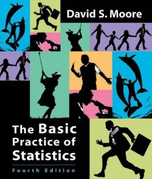Active versus passive learning. A study of computer-assisted learning examined the
Chapter 0, Problem 19.30(choose chapter or problem)
Active versus passive learning. A study of computer-assisted learning examined the learning of Blissymbols by children. Blissymbols are pictographs(think of Egyptian hieroglyphs) that are sometimes used to help learning-impairedchildren communicate. The researcher designed two computer lessons thattaught the same content using the same examples. One lesson required thechildren to interact with the material, while in the other the children controlledonly the pace of the lesson. Call these two styles Active and Passive. Childrenwere assigned at random to Active and Passive groups. After the lesson, thecomputer presented a quiz that asked the children to identify 56 Blissymbols.Here are the numbers of correct identifications by the 24 children in the Activegroup:12 Is there good evidence that active learning is superior to passive learning? Followthe four-step process as illustrated in Examples 19.2 and 19.3. That is, statehypotheses, make graphs to examine the data, discuss the conditions forinference, carry out a test, and state your conclusion.
Unfortunately, we don't have that question answered yet. But you can get it answered in just 5 hours by Logging in or Becoming a subscriber.
Becoming a subscriber
Or look for another answer
